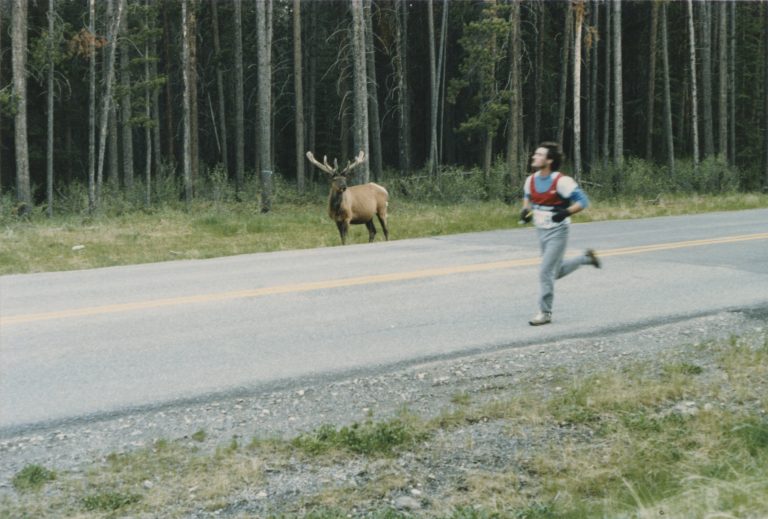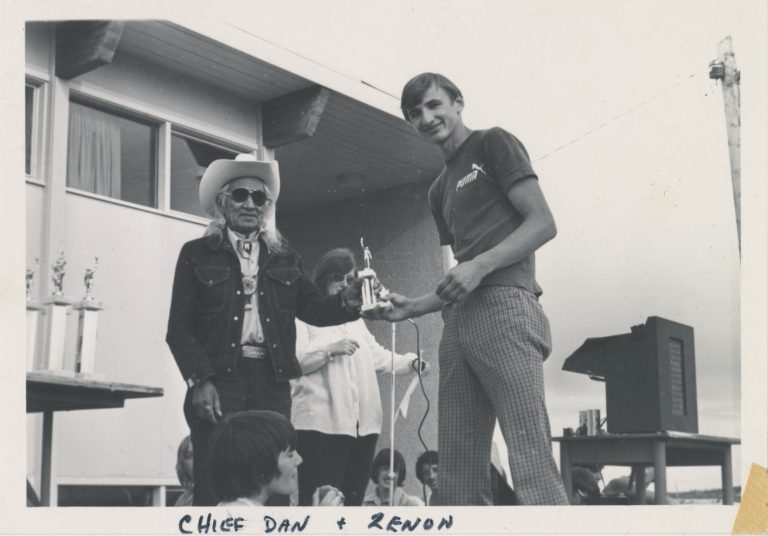

A core function of the South Peace Regional Archives is to process donated archival records so they can be made accessible to the public. While the Archives has been closed to in-person researchers, our Archivist Stephanie Friesen, has been hard at work processing new materials and dedicating time to reduce our backlog of unprocessed materials. One particularly large fonds she processed over the past several months is the Bill Turnbull fonds (fonds 664).
The Bill Turnbull fonds took more than 750 hours to process from start to finish. The records document 40 years of running and track and field history in Grande Prairie and area. The fonds consists of 1.07m of textual records, 4752 photographs, 1488 negatives, and 4 blueprints. A selection of the photographs have been digitized by the Archivist and are now available to view on Alberta On Record. This featured photograph was given the title “Murray Armstrong and Wapiti” by the donor, Bill Turnbull. It shows an elk (“Wapiti” in Cree) watching Murray Armstrong as he runs on the other side of the highway during the Jasper to Banff Relay: a long distance running race that was held from 1980 to 2000. The image below, also from the collection, shows Chief Dan George presenting Zenon Smiechowski with an Outstanding Athlete award at an Invitational Track Meet in 1973.

The act of processing involves making archival records ready to be accessed and seen by the public through arranging and describing the records. Some records come to the Archives in a fairly well organized manner. In that case, the Archivist will maintain the existing organizational method. Often, we receive records that are not organized in an easily recognizable way. If this is the case, the Archivist may sort through the records, and put the items in an order that makes it easier for researchers to navigate and understand. As part of this process, every photograph receives a unique number. Once a collection or fonds has been arranged, the Archivist will re-house the records in order to prepare them for long term preservation. This can include replacing staples with plastic paper clips, putting photographs in acid free sleeves and textual records in acid free folders and archival boxes. After the physical work of processing has been completed, the Archivist will describe the fonds. This means that they input information about the fonds into our database and create a finding aid. A finding aid describes what is contained within a fonds and helps users determine which records they would like to access. If a fonds contains photographs, the Archivist may digitize a selection of them to be uploaded to Alberta On Record. This time intensive labour process ensures the longevity of the records, and enables the public to access the collections and engage with our history.
